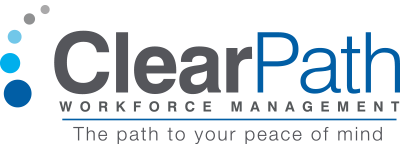It’s a new year, and if we had a crystal ball that could predict the future, what should we be planning for Human Resources in 2025? 2015 was only five years ago – could we have predicted the unemployment rate at a 50-year low? Did we see the massive Gig Economy growth coming, and changes to independent contractor laws? It is more essential than ever to a business that Human Resource (HR) management understand analytics and strategies. Tomorrow’s HR leaders will need to be broader thinkers, and they’ll have to be tech-savvy and nimble enough to deal with an increasingly agile workforce. The HR department of the past is already gone, and today’s HR department is rapidly evolving.
What does the future hold for HR? The Society of Human Resource Management (SHRM) recommends we can begin by enhancing our skills in critical areas that analysts say are key to future success in the profession and likely to be widely practiced by 2025. They include business strategy, analytics, and, of course, people.1 We don’t know for sure what the future holds until it transpires, so in taking some steps to plan for its inevitable arrival, HR trailblazers will be prepared. ClearPath recommends five tactics to better prepare for tomorrow.
1. Budget for Technology
Be sure to budget for keeping up with technology. HR leaders who want to stay ahead will make wise decisions about their technology. You don’t need to invest in every new technology that comes along; some innovations will undoubtedly be trends without staying power. Companies need to make sure their new technology doesn’t alienate their employees, potential employees, and their clients.
2. Continuous Training, Retraining, and Upskilling
Many organizations are finding it difficult to acquire talent to fill their openings. Companies and organizations succeed when they can find workers with strong knowledge and skill sets. But it’s become increasingly clear that in a tight labor market those workers are not always easy to come by. Further complicating this talent shortage is the Science, Technology, Engineering, and Math (STEM) shortage. Companies are learning that they can invest in their current best employees by continuously training, retraining, and upskilling them to help develop and retain them. The result is that they are creating their own top talent within their organizations.
3. Focus on People
Some companies, in an effort to streamline, have completely sterilized the employment process, with no human interaction until late in the process. Nowadays, candidates send resumes into an Applicant Tracking System (ATS) and if their resume doesn’t contain the correct keywords, the candidate may never get called. On the other hand, those who know the keywords to use can get through the process but might not be truly qualified. It has become an isolating process. Companies need to focus on people and put the “Human” back into Human Resources.
4. Foster a Culture of Gratitude
Astute HR leaders recommend that for an organization to improve morale and drive productivity, employee retention, wellness and engagement is to foster a culture of gratitude. A culture of gratitude starts from the top. If leadership takes the time to recognize the modest acts that can so easily go unnoticed throughout the company, it encourages others to do the same. People might feel awkward calling out the sometimes seemingly insignificant things people do or recognizing a milestone, but it’s a snowball effect—the more you express gratitude, the more natural and easier it becomes.
5. Stay Informed of Compliance Issues
It seems that today’s companies are always looking for ways to be more efficient when managing their workforces, while at the same time trying to be compliant with regulations. To prepare for the future, savvy HR leaders now more than ever are embracing multiple channels of talent and types of workforce: a mix of direct employees, contingent contractors, Independent Contractors, Corp-to-Corp, and SOW workers. Recently we saw several HR compliance changes that could affect your organization. From the Wage and Hour Law: New FLSA Guidance, Sexual Harassment training guidelines, Paid Sick Leave, Minimum Wage changes and AB-5 independent contractor compliance in CA, and more changes in other states. We do not see the employment laws, employer regulations, and trending workplace issues discontinuing in the future.
All signs indicate that HR will look very different by 2025. Not only will HR leaders administer business decisions, but they will also help make those decisions—as trusted workforce advisors.
Because understanding the strategies to prepare for the future of HR is crucial to your business, you should partner with a leader in workforce solutions. We can help you design a solution pertaining to your contingent workers and relieve this burden by outsourcing your back-office Human Resources and Payroll functions to our Employer of Record service. Contact us to learn more about how our expert personalized service can let you get back to focusing on your business goals. Work with a leader in the industry for outsourced Human Resources and Payroll functions associated with W-2 and 1099 contingent workers. Let ClearPath be the path to your peace of mind. For other questions about assessing your workforce or conducting a review of your current hiring processes, the ClearPath team can assist you.
This blog article is for general information purposes only. It should not be solely relied upon or substituted for legal or professional advice. The use of the information provided is at your own risk.
Source:
- Written by: Connie Wendt
- Posted on: January 14, 2020
- Tags: EMPLOYER OF RECORD SERVICE, ENGAGING W-2 WORKERS, FORM I-9, INDEPENDENT CONTRACTOR COMPLIANCE, MARIJUANA IN THE WORKPLACE, Minimum Wage, PAID SICK LEAVE, SEXUAL HARASSMENT TRAINING, W-2 Worker Classification, WAGE AND HOUR LAW, Workforce Classification

